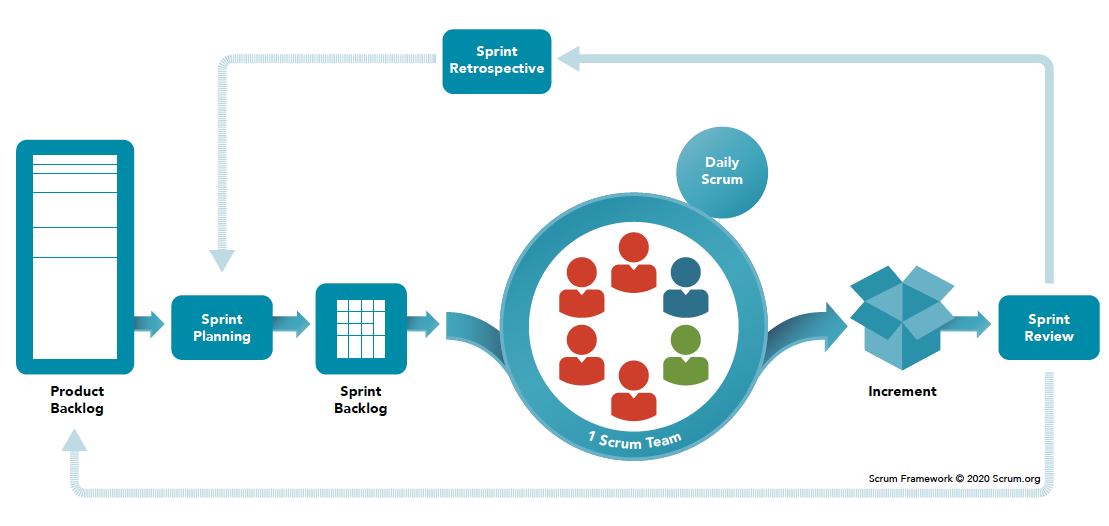Scrum Methodology
Scrum is a methodology for managing and creating products in a complex environment with frequently changing conditions. The term "Scrum" comes from the game of rugby and means "a formation of players who bind closely together with their heads down and attempt to push their opponents backward." The methodology was first presented in its current form by Ken Schwaber and Jeff Sutherland at the OOPSLA'98 conference.
Scrum uses an empirical approach, which means that the results of the work are measurable. To achieve this, Scrum uses tightly prescribed regulations that must be followed for the methodology to work. One of the key elements of Scrum is the timebox, where events should not take more than a certain amount of time, and all necessary events within the methodology have prescribed limits. The word "Sprint" has become a common term in Scrum and refers to a period of time during which the team does work and produces a working increment that is ready for release.
Many development teams and companies choose Scrum for several reasons. Firstly, they want to regulate their communication with developers and have an understanding of deadlines. This is achieved through Scrum sprints, the duration of which is initially regulated but may change in some cases. Since all sprints have the same length, it helps to predict the direction of movement and cash flows from a business perspective. Businesses can understand what the team will be doing in the Sprint, and the next sprint can be predicted based on the results of the work. Scrum offers a flexible approach and enables businesses to have an up-to-date and understandable development picture, which helps to avoid budgeting mistakes.
Due to the increasing popularity and attempts to implement Scrum in companies, many so-called coaches, courses, and other materials for self-study have appeared on the market. Therefore, it is recommended to first familiarize oneself with the original books and texts from the authors of the methodology, preferably in English, for which sites such as Scrum.org and Scrumguides exist. Good to start with the book "Scrum: The Art of Doing Twice the Work in Half the Time." More details about Scrum and the approaches to its implementation will be discussed in future articles.

References
- [1] Ken Schwaber - https://en.wikipedia.org/wiki/Ken_Schwaber
- [2] Jeff Sutherland - https://en.wikipedia.org/wiki/Jeff_Sutherland
- [3] Scrum.org
- [4] Scrumguides.org